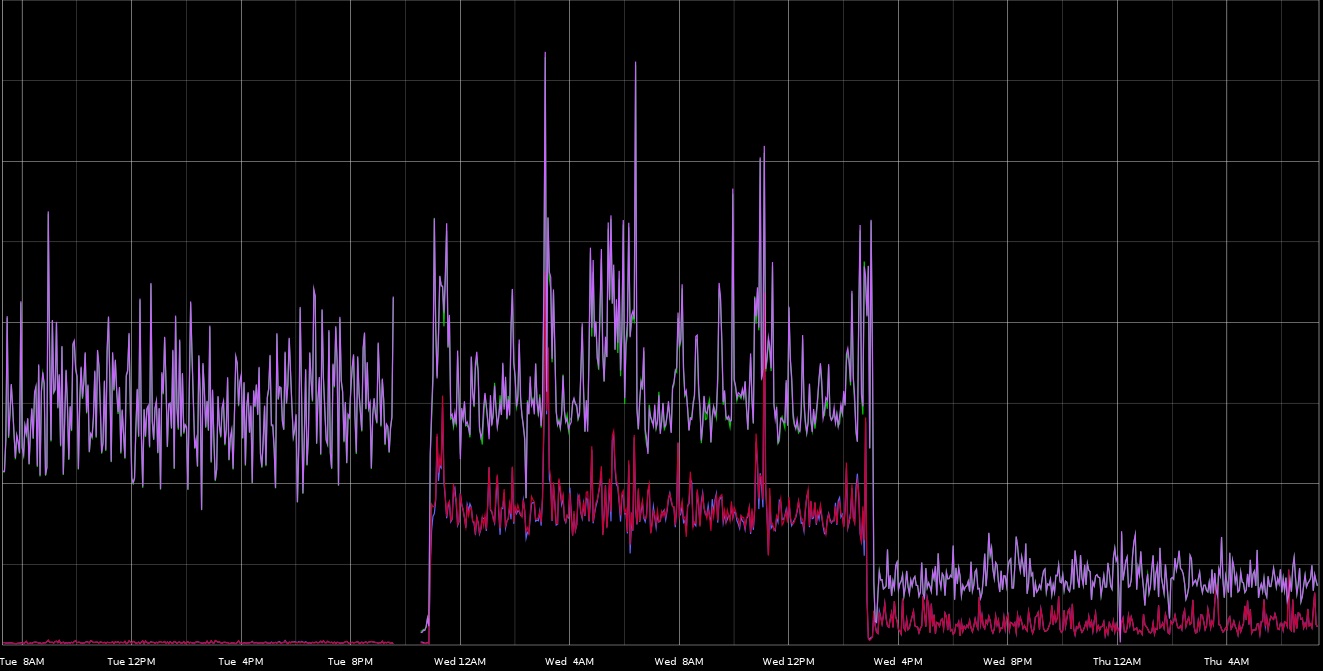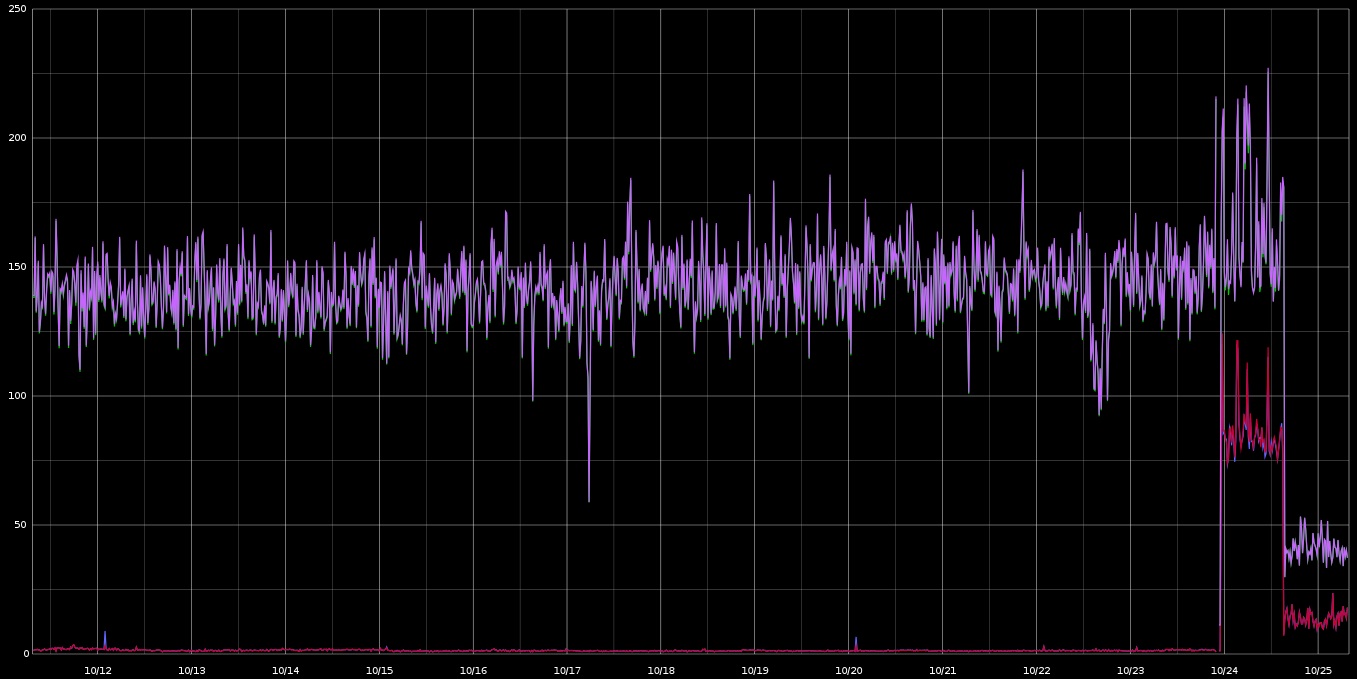I'm a big fan of the Ops School idea. I've struggled for years about how to "train up" someone coming into this field. So much of our skill set is forged in the fire of outages and troubleshooting.
One of the things that is both good and bad about system administration and operations is that we tend to see patterns. It's good in that we immediately see things that stand out. The downside is we tend to superimpose that pattern recognition in inappropriate ways.
We had an interesting issue happen yesterday at the dayjob. I won't go into exactly what it was here but I had an idea based on some graphs I was looking at. It's part social experiment but it's also part problem solving skills.
Given the following image with no context, what do you think happened? What are some of the key indicator points that jump out and what pattern do they call to mind?
(Since it may not be clear simply from an image resolution perspective, there are 4 metrics in this graph)
You can probably spot some common patterns in this graph. Here's a bit more historical context:


Ok, I'll bite.
The first key indicator is the loss of metrics. That tells me the host went down (or encountered resource exhaustion) or the metrics collection stopped working. Since the pattern changes after recovery, I think it's safe to assume the former.
The second indicator is the change in activity in what we'll call the "secondary" group of metrics. We're seeing some periodic behavior mirroring in relation to the "primary" (purple) metric. This tells me there's some causation but we don't know which way.
The last key indicator is the "scaling down" of all the metrics. This seems to imply you were able to throw additional resources at whatever's going on here, but we're guessing that "low values are good" and "high values are bad" without really knowing. I'm assuming that the red/blue/??? metrics are a measurement of errors; if low values were "bad" then I'd expect an inverse relationship (errors to spike as throughput decreased).